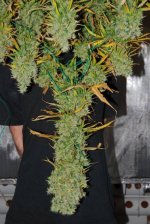eurasian_farmer
Member
Perlite has been used in horticulture since the 1800s...
Typical analysis of perlite
70–75% silicon dioxide: SiO2
12–15% aluminium oxide: Al2O3
3–4% sodium oxide: Na2O
3–5% potassium oxide: K2O
0.5-2% iron oxide: Fe2O3
0.2–0.7% magnesium oxide: MgO
0.5–1.5% calcium oxide: CaO
3–5% loss on ignition (chemical / combined water)
As well as its perfect structure for rooting cuttings.
Personally i use clay balls as im in RDWC, but if i start anything new i use coco/perlite/vermicompost.
Not sure what to say about these Hazes, perhaps they just don't suit my metabolism or something.
but then i didn't like food until someone other than my mum 'cooked' it.
Typical analysis of perlite
70–75% silicon dioxide: SiO2
12–15% aluminium oxide: Al2O3
3–4% sodium oxide: Na2O
3–5% potassium oxide: K2O
0.5-2% iron oxide: Fe2O3
0.2–0.7% magnesium oxide: MgO
0.5–1.5% calcium oxide: CaO
3–5% loss on ignition (chemical / combined water)
As well as its perfect structure for rooting cuttings.
Personally i use clay balls as im in RDWC, but if i start anything new i use coco/perlite/vermicompost.
Not sure what to say about these Hazes, perhaps they just don't suit my metabolism or something.
but then i didn't like food until someone other than my mum 'cooked' it.




 ?
? 
